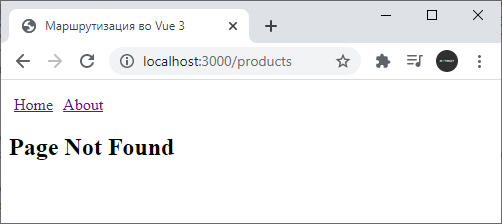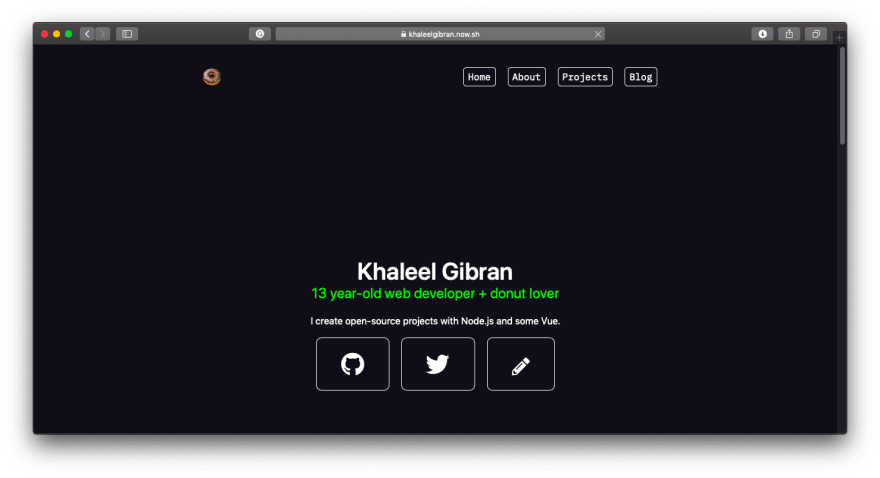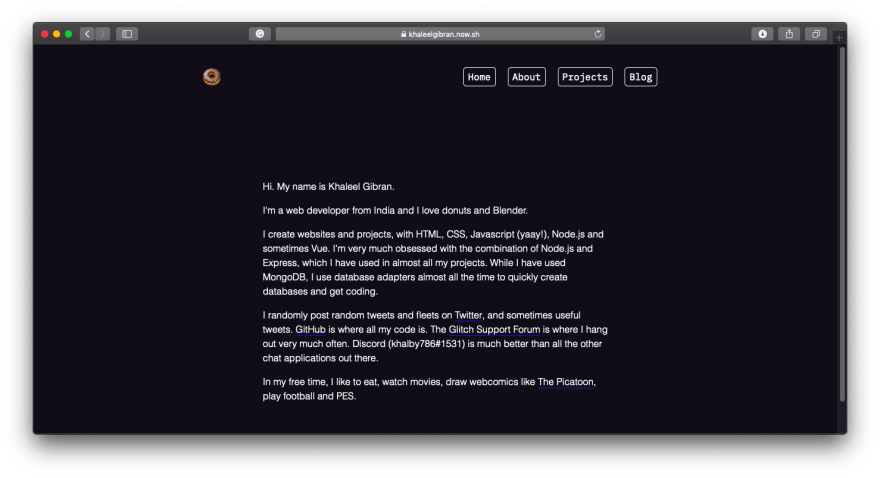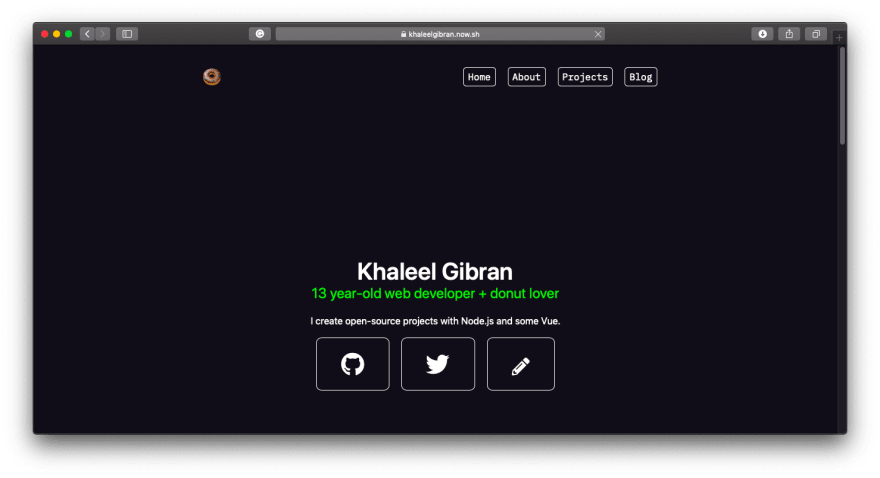Время на прочтение
6 мин
Количество просмотров 5.5K
Есть у меня один сайт, как сейчас говорят, пет-проект. Был написан в далеком 2013 году, что называется «на коленке» без использования каких-то фреймворков. Только php, только хардкор. Но тем не менее, функции свои выполнял, даже обрел некую популярность в узких кругах и был неплохо проиндексирован.
Недавно было решено начисто переписать его на современном стеке. Выбор пал на Laravel и Vue с серверным рендером. Сказано — сделано. Сайт переписан, развернут на vps, работает. Но есть одно но. В яндекс-метрике остались тысячи ссылок, которые на текущий момент не актуальны, но эти адреса возвращают код 200 и поисковый бот снова и снова их проверяет. Не хорошо.
Итак, проблема обозначена. Посмотрим на используемый стек технологий, чтобы понять что к чему.
Подготовка
Laravel используется исключительно в качестве API, на сервере висит на localhost:81, а nginx проксирует к нему маршруты /api . Здесь ничего не сделать.
Фронтэнд написан с использованием фреймворка quasar. Это невероятно крутая вещь, которая может собрать вам сайт или приложение под несколько платформ. Я использую платформу SSR. В этом случае квазар собирает весь фронт, плюс генерирует nodejs-сервер на базе express. Этот сервер у меня запущен на localhost:3000 и опять же nginx проксирует к нему все остальные запросы (кроме API).
Чтобы говорить более предметно, давайте создадим простенький проект. Будем считать, что с установкой quasar/cli вы справитесь сами/
quasar create q404В папке q404 будет создана стартовая заготовка проекта. Можно перейти в нее и запустить сервер разработки.
cd q404
quasar dev -m ssrНе заморачиваясь сильно на этом тестовом проекте, добавим вторую страницу AboutMe:
pages/AboutMe.vue
<script>
export default {
name: 'AboutMe',
};
</script>
<template>
<q-page padding>
<h1>About me</h1>
</q-page>
</template>
Соответствующий роут
router/routes.js
const routes = [
{
path : '/',
component: () => import('layouts/MainLayout'),
children : [
{ path: '', component: () => import('pages/Index') },
// Added:
{ path: 'about-me', component: () => import('pages/AboutMe') },
],
},
И заменим главное меню
layouts/MainLayout.vue
const linksData = [
{
title: 'Homepage',
icon : 'code',
link : { path: '/' },
},
{
title: 'About Me',
icon : 'code',
link : { path: '/about-me' },
},
{
title: '404 test',
icon : 'code',
link : { path: '/404' },
},
];
Для правильной работы следует еще поменять компонент EssentialLink.vue
EssentialLink.vue
<script>
...
link: {
type : Object,
default: null,
},
...
</script>
<template>
<q-item
clickable
:to="link"
>
...
</q-item>
</template>Теперь все готово. Если сейчас мы запустим dev-сервер и откроем сайт, то увидим, что все работает, а заглянув в исходный код страницы убедимся, что и серверный рендер отрабатывает.
Кроме одной проблемы — страница 404 возвращает нам код ответа 200.
Поиск решения
Поиск информации в интернете готовых к использованию решений не дал. В официальном репозитории квазара есть ишью где рекомендуют создать отдельный роут для 404 страницы и редиректить на нее. Это не всегда подходит, мне, например, хотелось бы, чтобы пользователь оставался на той же странице, которую запросил, но с отображением плашки «404 not found», т.е. чтобы url в адресной строке не менялся.
Другой совет заключается в том, чтобы не использовать в приложении роут «*». Да. В этом случае при запросе несуществующей страницы сервер ответит кодом 404, но при навигации внутри приложения у нас теперь не будет красивой плашки 404. Не подходит.
На тостере предлагалось в сервере express делать дополнительные запросы и отправлять при необходимости 404-й код. Но сами понимаете, такое себе решение. В топку.
Встречались и еще советы разной степени полезности, но все они были отброшены как не подходящие по тем или иным причинам.
Но как я люблю отвечать заказчикам на их хотелки — «для программиста нет ничего невозможного, чего бы он не мог сделать с кодом». Это наша вселенная, мы здесь боги.
Решение
Давайте еще раз сформулируем ТЗ. Мы хотим
-
отдавать 404 по несуществующим адресам (тем, что явно не прописаны в нашем роутере)
-
отдавать 404 по несуществующим эндпойнтам API
-
отдавать 404 при отсутствии запрошенной информации. Т.е. эндпойнт верный, но объекта в базе данных нет.
-
также не хотим отказываться от использования роута «*» на стороне клиента
Решение на самом деле находится на поверхности.
Посмотрим на на код сервера, который нам предлагает квазар:
src-ssr/index.js
ssr.renderToString({ req, res }, (err, html) => {
if (err) {
if (err.url) {
res.redirect(err.url)
}
else if (err.code === 404) {
// Should reach here only if no "catch-all" route
// is defined in /src/routes
res.status(404).send('404 | Page Not Found')
}
else {
// Render Error Page or
// create a route (/src/routes) for an error page and redirect to it
res.status(500).send('500 | Internal Server Error')
if (ssr.settings.debug) {
console.error(`500 on ${req.url}`)
console.error(err)
console.error(err.stack)
}
}
}
else {
res.send(html)
}
})
Комментарий в ветке условия 404 предупреждает нас, что сюда мы попадем, только если не будем использовать роут «*». А также мы можем понять, что если фреймворк не выбрасывает нас сюда, то мы сами можем бросить ошибку с телом {code:404}.
Квазар предлагает нам дополнительный хук — preFetch. Мы можем им воспользоваться, чтобы на стороне сервера выбросить нужную ошибку.
Для задействования данной фичи, нужно раскомментировать в файле quasar.conf.js строку
preFetch: true,В компоненте Error404.vue добавим код
export default {
name: 'Error404',
preFetch({ ssrContext }) {
if (ssrContext) {
return Promise.reject({ code: 404 });
}
},
};Теперь при отображении данного компонента будет выбрасываться ошибка и express сервер сможет поймать её и ответить кодом 404. Причем, ошибка будет выбрасываться только в контексте серверного рендера, на клиенте же, перейдя на не существующий адрес, мы увидим красивую заглушку NotFound.
Первый и четвертый пункты требований мы выполнили.
Теперь займемся обработкой api-вызовов. Подготовим Axios. Создадим инстанс, настроим его и привяжем Vue.
boot/axios.js
import Axios from 'axios';
export default ({ Vue, ssrContext, store }) => {
let axiosInstance = Axios.create({
baseURL : '/api',
timeout : 0,
responseType : 'json',
responseEncoding: 'utf8',
headers : {
'X-Requested-With': 'XMLHttpRequest',
'Accept' : 'application/json',
},
// Reject only if the status code is greater than or equal to specify here
validateStatus: status => status < 500,
});
// ...
Vue.axios = axiosInstance;
}
Здесь все стандартно — обозначаем базовый урл, типы ответов, кодировку, заголовки. Функция validateStatus определяет ответы с какими кодами считать ошибкой. Мы будем считать ошибками все коды 5xx. В этом случае сайт будет возвращать код 500 и соответствующее сообщение.
Чтобы централизованно обрабатывать запросы к несуществующим эндпойнтам, добавим в эту конфигурацию перехватчик (interceptor в axios):
//...
axiosInstance.interceptors.response.use(response => {
if (response.status >= 400) {
if (ssrContext) {
return Promise.reject({ code: response.status });
} else {
// store.commit('showErrorPage', response.status);
}
}
return response.data;
});К закомментированной строке вернемся позднее. Теперь Axios будет отклонять промис при ответах сервера с ошибками 4xx, и мы будем попадать в соответствующую ветку условия в сервере express чтобы вернуть правильный статус-код.
Для примера модифицируем компонент AboutMe.vue, добавив в него запрос к нашему API. Так как апишки у нас сейчас нет, запрос вернет 404 ошибку.
preFetch() {
return Vue.axios.get('/test.json')
.then(response => {
console.log(response);
});
},Здесь два важных момента. Мы должны обязательно вернуть промис и мы не должны перехватывать ошибку, оставив это на откуп библиотеке Axios. Если нам нужно выполнить для данной страницы несколько запросов, можно обернуть их в Promise.all.
Теперь, если мы перейдем на адрес /about-me, и обновим страницу, то увидим в панели разработчика браузера, что запрос страницы возвращает ответ с кодом 404. То что нужно поисковым системам! Пункт два выполнен.
Однако при внутреннем переходе на данную страницу пользователь никак не информируется о проблеме. Тут можно применить разные решения для отображения плашки 404. Я использовал следующее.
Добавил в стор флаг
showErrorPage: false,Мутацию
export const showErrorPage = (state, show) => state.showErrorPage = show;И условие в компонент основной раскладки
<q-page-container>
<Error404 v-if="$store.state.example.showErrorPage"/>
<router-view v-else/>
</q-page-container>И возвращаясь к загрузчику Axios, раскомментируем там строку
store.commit('showErrorPage', response.status);Еще в роутере придется добавить хук beforeEach для сброса этого флага (но только при работе в браузере)
router/index.js
export default function ({ store, ssrContext }) {
const Router = new VueRouter({
scrollBehavior: () => ({ x: 0, y: 0 }),
routes,
mode: process.env.VUE_ROUTER_MODE,
base: process.env.VUE_ROUTER_BASE,
});
if (!ssrContext) {
Router.beforeEach((to, from, next) => {
store.commit('showErrorPage', false);
next();
});
}
return Router;
}
На данный момент мы реализовали 3 из 4-х пунктов технического задания.
Что касается третьего пункта
отдавать 404 при отсутствии запрошенной информации. Т.е. эндпойнт верный, но объекта в базе данных нет.
то тут возможны варианты. Если вы делаете свой API, как положено, RESTful, то такой запрос обязан вернуть статус-код 404, что уже вписывается в построенную систему. Если же вы по каким-то причинам возвращаете объекты типа
{
"status": false,
"message": "Object not found"
}то можно добавить дополнительные проверки в перехватчик Axios.
Еще кое-что
Внимательный читатель заметил, что мы в перехватчике отклоняем промис таким образом:
Promise.reject({ code: response.status });А значит должны немного доработать express-сервер
else if (err.code >=400 && err.code < 500) {
res.status(err.code).send(`${err.code} | ${getStatusMessage(err.code)}`);
}Реализацию функции getStatusMessageрассматривать не будем =)
Таким образом мы получили также возможность корректной обработки любых 4хх кодов ответа от API и в первую очередь нам конечно интересны 401 и 403.
Заключение
Вот, пожалуй, и все, что я хотел написать.
Исходники тестового проекта закинул на гитхаб
In the routes declaration, I like to add this:
[
...
{ path: '/404', component: NotFound },
{ path: '*', redirect: '/404' },
...
]
Which will imply that if the user is navigated to a path which does not match any routes, it will be redirected to the «404» route, which will contain the «not found» message.
The reason I’ve separated it into 2 routes is so that you can also programmatically direct the user to the 404 route in such a case when some data you need does not resolve.
For instance, if you were creating a blog, you might have this route:
{ path: '/posts/:slug', component: BlogPost }
Which will resolve, even if the provided slug does not actually retrieve any blog post. To handle this, when your application determines that a post was not found, do
return this.$router.push('/404')
or
return router.push('/404')
if you are not in the context of a Vue component.
One thing to bear in mind though is that the correct way to handle a not found response isn’t just to serve an error page — you should try to serve an actual HTTP 404 response to the browser. You won’t need to do this if the user is already inside a single-page-application, but if the browser hits that example blog post as its initial request, the server should really return a 404 code.
Последнее обновление: 04.11.2020
Распространенной задачей в веб-приложениях является обработка несущеcтвующих путей, когда приложение не может сопоставить запрошенный адрес ни с одним из ресурсов приложения.
Рассмотрим, как это можно сделать во Vue 3.
<!DOCTYPE html>
<html>
<head>
<title>Маршрутизация во Vue 3</title>
<meta charset="utf-8" />
<style>
ul{list-style-type: none;padding: 0;}
li{display: inline-block;}
a{padding: 5px;}
a.router-link-active, li.router-link-active>a {
color: red;
}
</style>
</head>
<body>
<div id="app">
<ul>
<li><router-link to="/">Home</router-link></li>
<li><router-link to="/about">About</router-link></li>
</ul>
<router-view></router-view>
</div>
<script src="https://unpkg.com/vue@next"></script>
<script src="https://unpkg.com/vue-router@next"></script>
<script>
const Home = { template: '<h2>Home Page</h2>' }
const About = { template: '<h2>About Page</h2>' }
const NotFound = { template: '<h2>Page Not Found</h2>' }
const routes = [
{ path: '/', component: Home },
{ path: '/about', component: About },
{ path: '/:pathMatch(.*)*', component: NotFound },
];
const router = VueRouter.createRouter({
history: VueRouter.createWebHistory(),
routes,
});
const app = Vue.createApp({});
app.use(router);
app.mount('#app');
</script>
</body>
</html>
Для обработки запросов к несуществующим ресурсам применяется компонент NotFound, который просто выводит соответствующую информацию:
const NotFound = { template: '<h2>Page Not Found</h2>' }
Этом компонент обрабатывает запросы по следующему маршруту:
{ path: '/:pathMatch(.*)*', component: NotFound }
В данном случае шаблон маршрута выглядит несколько замыславато: «/:pathMatch(.*)*». Фактически он означает, что вся часть после слеша расценивается
как параметр pathMatch, который может иметь произвольное количество символов и произвольное количество сегментов. То есть по сути он будет представлять запрос, которому
не соответствуют другие маршруты.
В итоге при обращении к несуществующему ресурсу запрос будет будет обрабатываться компонентом NotFound:

Different History modes
Watch a free video lesson on Vue School
The history option when creating the router instance allows us to choose among different history modes.
Hash Mode
The hash history mode is created with createWebHashHistory():
js
import { createRouter, createWebHashHistory } from 'vue-router'
const router = createRouter({
history: createWebHashHistory(),
routes: [
//...
],
})import { createRouter, createWebHashHistory } from 'vue-router'
const router = createRouter({
history: createWebHashHistory(),
routes: [
//...
],
})It uses a hash character (#) before the actual URL that is internally passed. Because this section of the URL is never sent to the server, it doesn’t require any special treatment on the server level. It does however have a bad impact in SEO. If that’s a concern for you, use the HTML5 history mode.
HTML5 Mode
The HTML5 mode is created with createWebHistory() and is the recommended mode:
js
import { createRouter, createWebHistory } from 'vue-router'
const router = createRouter({
history: createWebHistory(),
routes: [
//...
],
})import { createRouter, createWebHistory } from 'vue-router'
const router = createRouter({
history: createWebHistory(),
routes: [
//...
],
})When using createWebHistory(), the URL will look «normal,» e.g. https://example.com/user/id. Beautiful!
Here comes a problem, though: Since our app is a single page client side app, without a proper server configuration, the users will get a 404 error if they access https://example.com/user/id directly in their browser. Now that’s ugly.
Not to worry: To fix the issue, all you need to do is add a simple catch-all fallback route to your server. If the URL doesn’t match any static assets, it should serve the same index.html page that your app lives in. Beautiful, again!
Memory mode
The memory history mode doesn’t assume a browser environment and therefore doesn’t interact with the URL nor automatically triggers the initial navigation. This makes it perfect for Node environment and SSR. It is created with createMemoryHistory() and requires you to push the initial navigation after calling app.use(router).
js
import { createRouter, createMemoryHistory } from 'vue-router'
const router = createRouter({
history: createMemoryHistory(),
routes: [
//...
],
})import { createRouter, createMemoryHistory } from 'vue-router'
const router = createRouter({
history: createMemoryHistory(),
routes: [
//...
],
})While it’s not recommended, you can use this mode inside Browser applications but note there will be no history, meaning you won’t be able to go back or forward.
Example Server Configurations
Note: The following examples assume you are serving your app from the root folder. If you deploy to a subfolder, you should use the publicPath option of Vue CLI and the related base property of the router. You also need to adjust the examples below to use the subfolder instead of the root folder (e.g. replacing RewriteBase / with RewriteBase /name-of-your-subfolder/).
Apache
<IfModule mod_negotiation.c>
Options -MultiViews
</IfModule>
<IfModule mod_rewrite.c>
RewriteEngine On
RewriteBase /
RewriteRule ^index.html$ - [L]
RewriteCond %{REQUEST_FILENAME} !-f
RewriteCond %{REQUEST_FILENAME} !-d
RewriteRule . /index.html [L]
</IfModule><IfModule mod_negotiation.c>
Options -MultiViews
</IfModule>
<IfModule mod_rewrite.c>
RewriteEngine On
RewriteBase /
RewriteRule ^index.html$ - [L]
RewriteCond %{REQUEST_FILENAME} !-f
RewriteCond %{REQUEST_FILENAME} !-d
RewriteRule . /index.html [L]
</IfModule>Instead of mod_rewrite, you could also use FallbackResource.
nginx
nginx
location / {
try_files $uri $uri/ /index.html;
}location / {
try_files $uri $uri/ /index.html;
}Native Node.js
js
const http = require('http')
const fs = require('fs')
const httpPort = 80
http
.createServer((req, res) => {
fs.readFile('index.html', 'utf-8', (err, content) => {
if (err) {
console.log('We cannot open "index.html" file.')
}
res.writeHead(200, {
'Content-Type': 'text/html; charset=utf-8',
})
res.end(content)
})
})
.listen(httpPort, () => {
console.log('Server listening on: http://localhost:%s', httpPort)
})const http = require('http')
const fs = require('fs')
const httpPort = 80
http
.createServer((req, res) => {
fs.readFile('index.html', 'utf-8', (err, content) => {
if (err) {
console.log('We cannot open "index.html" file.')
}
res.writeHead(200, {
'Content-Type': 'text/html; charset=utf-8',
})
res.end(content)
})
})
.listen(httpPort, () => {
console.log('Server listening on: http://localhost:%s', httpPort)
})Express with Node.js
For Node.js/Express, consider using connect-history-api-fallback middleware.
Internet Information Services (IIS)
- Install IIS UrlRewrite
- Create a
web.configfile in the root directory of your site with the following:
xml
<?xml version="1.0" encoding="UTF-8"?>
<configuration>
<system.webServer>
<rewrite>
<rules>
<rule name="Handle History Mode and custom 404/500" stopProcessing="true">
<match url="(.*)" />
<conditions logicalGrouping="MatchAll">
<add input="{REQUEST_FILENAME}" matchType="IsFile" negate="true" />
<add input="{REQUEST_FILENAME}" matchType="IsDirectory" negate="true" />
</conditions>
<action type="Rewrite" url="/" />
</rule>
</rules>
</rewrite>
</system.webServer>
</configuration><?xml version="1.0" encoding="UTF-8"?>
<configuration>
<system.webServer>
<rewrite>
<rules>
<rule name="Handle History Mode and custom 404/500" stopProcessing="true">
<match url="(.*)" />
<conditions logicalGrouping="MatchAll">
<add input="{REQUEST_FILENAME}" matchType="IsFile" negate="true" />
<add input="{REQUEST_FILENAME}" matchType="IsDirectory" negate="true" />
</conditions>
<action type="Rewrite" url="/" />
</rule>
</rules>
</rewrite>
</system.webServer>
</configuration>Caddy v2
try_files {path} /try_files {path} /Caddy v1
rewrite {
regexp .*
to {path} /
}rewrite {
regexp .*
to {path} /
}Firebase hosting
Add this to your firebase.json:
json
{
"hosting": {
"public": "dist",
"rewrites": [
{
"source": "**",
"destination": "/index.html"
}
]
}
}{
"hosting": {
"public": "dist",
"rewrites": [
{
"source": "**",
"destination": "/index.html"
}
]
}
}Netlify
Create a _redirects file that is included with your deployed files:
/* /index.html 200/* /index.html 200In vue-cli, nuxt, and vite projects, this file usually goes under a folder named static or public.
You can read more about the syntax on Netlify documentation. You can also create a netlify.toml to combine redirections with other Netlify features.
Vercel
Create a vercel.json file under the root directory of your project with the following:
json
{
"rewrites": [{ "source": "/:path*", "destination": "/index.html" }]
}{
"rewrites": [{ "source": "/:path*", "destination": "/index.html" }]
}Caveat
There is a caveat to this: Your server will no longer report 404 errors as all not-found paths now serve up your index.html file. To get around the issue, you should implement a catch-all route within your Vue app to show a 404 page:
js
const router = createRouter({
history: createWebHistory(),
routes: [{ path: '/:pathMatch(.*)', component: NotFoundComponent }],
})const router = createRouter({
history: createWebHistory(),
routes: [{ path: '/:pathMatch(.*)', component: NotFoundComponent }],
})Alternatively, if you are using a Node.js server, you can implement the fallback by using the router on the server side to match the incoming URL and respond with 404 if no route is matched. Check out the Vue server side rendering documentation for more information.

In this tutorial, you’ll learn how to add a custom 404 page to a Vue app (generated using the Vue CLI) with a basic Vue router configuration.
For this tutorial, I will be using a Vue router starter app generated using the Vue CLI. Here’s how the project file tree might look:

Right now, all we need to focus on are src/router/index.js and the components of the src/views folder.
This is how src/router/index.js should somewhat look:
import Vue from 'vue';
import VueRouter from 'vue-router';
import Home from '../views/Home.vue';
import About from '../views/About.vue';
Vue.use(VueRouter)
const routes = [
{
path: '/',
name: 'Home',
component: Home
},
{
path: '/about',
name: 'About',
// route level code-splitting
// this generates a separate chunk (about.[hash].js) for this route
// which is lazy-loaded when the route is visited.
component: () => import(/* webpackChunkName: "about" */ '../views/About.vue')
}
]
const router = new VueRouter({
routes
})
export default router
Enter fullscreen mode
Exit fullscreen mode
1) Visit the home page of the Vue app. /
What do you see?

2) Visit the about page of the Vue app. /about
What do you see?

3) Visit a random url of the app. Like /hi/someurl/404
What do you see?

(I customised my Vue app a lot, so it looks a whole lot different from the starter Vue router app, kindly excuse me for that 😅)
What do we notice from the above 3 scenarios?
If we visit a URL that exists, it correctly renders the component associated with that route. But if the URL does not exist, it just redirects it to the homepage, instead of showing some sort of error or a default 404 page. You might also have noticed that the URL of the default Vue app has /#/ suffixed to the URL.

We can fix all of these issues.
For the redirecting-to-homepage-when-it-doesn’t-exist case, we can create a custom 404 page, by specifying a wildcard route after all the other routes. First, we will have to create a 404 component.
In src/views folder, create a file named NotFound.vue. Add some basic text and images that makes it look like a 404 page.
<template>
<center>
<h1>Not Found!</h1>
<p>
<a href="/">Go home?</a>
</p>
</center>
</template>
<script>
export default {
name: 'NotFound'
}
</script>
<style scoped>
center {
margin: 15vw;
}
h1 {
color: var(--border);
font-size: 2em;
}
</style>
Enter fullscreen mode
Exit fullscreen mode
Once you have created NotFound.vue, in src/router/index.js add a wildcard route pointing towards the NotFound.vue component.
import Vue from 'vue';
import VueRouter from 'vue-router';
import Home from '../views/Home.vue';
import About from '../views/About.vue';
import NotFound from '../views/NotFound.vue';
Vue.use(VueRouter)
const routes = [
{
path: '/',
name: 'Home',
component: Home
},
{
path: '/about',
name: 'About',
// route level code-splitting
// this generates a separate chunk (about.[hash].js) for this route
// which is lazy-loaded when the route is visited.
component: () => import(/* webpackChunkName: "about" */ '../views/About.vue')
},
{
path: '*',
name: 'Not Found',
component: NotFound
}
]
const router = new VueRouter({
routes
})
export default router
Enter fullscreen mode
Exit fullscreen mode
But we need to do one more thing, only then can we «successfully» create a 404 page.
The weird URL.
The «weird» URL is because the Vue router uses hash mode for routing by default. It uses the URL hash to simulate a full URL so that the page won’t be reloaded when the URL changes.
We can prevent the Vue router from doing this by enabling History mode.
const router = new VueRouter({
mode: 'history',
routes
});
Enter fullscreen mode
Exit fullscreen mode
The final src/router/index.js:
import Vue from 'vue';
import VueRouter from 'vue-router';
import Home from '../views/Home.vue';
import About from '../views/About.vue';
import NotFound from '../views/NotFound.vue';
Vue.use(VueRouter)
const routes = [
{
path: '/',
name: 'Home',
component: Home
},
{
path: '/about',
name: 'About',
// route level code-splitting
// this generates a separate chunk (about.[hash].js) for this route
// which is lazy-loaded when the route is visited.
component: () => import(/* webpackChunkName: "about" */ '../views/About.vue')
},
{
path: '*',
name: 'Not Found',
component: NotFound
}
]
const router = new VueRouter({
mode: 'history',
routes
})
export default router
Enter fullscreen mode
Exit fullscreen mode
And now, our URL looks normal!

And that’s it! We have a fully functional 404 page now! Hope you enjoyed this tutorial!
